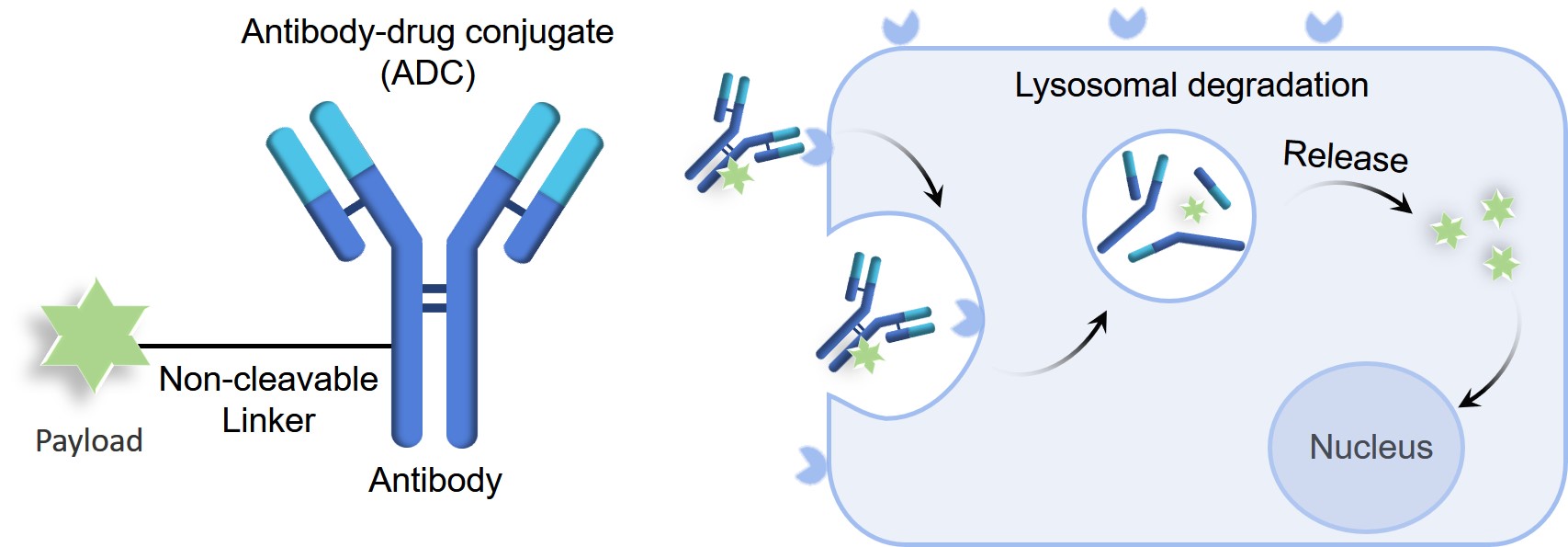Non-cleavable Linker Annotation
A targeted treatment approach that combines the advantages of both antibodies and small molecule medications is called an antibody-drug conjugate (ADC). While releasing the medication in cooperation with the target sites, it maintains the benefits of antibodies in terms of pharmacokinetics (PK), low side effects, and high specificity. The challenge of ADCs is to successfully attach the antibody to the medication and guarantee its stability while yet enabling efficient medication release at the region of interest. As a result, the linkers of the ADCs have played an increasingly important role in ADC development. Creative Biolabs is an established contract research organization providing a variety of non-cleavable linker-based BioConjugation services to clients worldwide. Our BioConjugation research platform is equipped with advanced technologies and experienced professionals, which enables customized and specialized BioConjugation services for your ADC development projects.
Non-cleavable Linkers
Non-cleavable linkers release cytotoxic molecules by proteolytic degradation of the antibody portion of the ADC, which preserves the amino acids attached to the antibody on the linkers. The drug release from ADCs linked by non-cleavage linkers is not dependent on the different properties between the plasma and certain cytoplasmic compartments, but rather on ADCs entering the lysosome of tumor cells through antigen-mediated endocytosis and being degraded by lysosomal proteases to release drug derivatives, which are composed of cytotoxic drugs, linkers, and covalently attached amino acid residues. Amino acid-drug metabolites from conjugates with non-cleavable linkers present the advantages of being more hydrophilic, having less membrane permeability, fewer bystander effects, and fewer nonspecific toxicities. Accordingly, although internalization of non-cleavable linkers conjugated ADCs is dependent on target cell specificity, non-cleavable linkers that remain covalently linked to the drug after the monoclonal antibody vehicles have been hydrolyzed in the target cell lysosomes possess higher stability and tolerance in the systemic circulation and may enhance the therapeutic window and improve the therapeutic efficacy of cytotoxic drugs. It has been demonstrated that some of the non-cleavable linked ADCs outperform the corresponding cleavable in both in vivo and clinical studies.
 Fig.1 ADCs with non-cleavable linker and release mechanism of the payloads.
Fig.1 ADCs with non-cleavable linker and release mechanism of the payloads.
Linkers contribute significantly to influencing the stability, toxicity, PK properties, and pharmacodynamics of ADCs. As a leading service provider, Creative Biolabs offers comprehensive non-cleavable linker BioConjugation services in the design and selection of suitable linkers to connect monoclonal antibodies to cytotoxic drugs. If you have the intention of learning more about our non-cleavable linker BioConjugation services and customizing your projects, please feel free to contact us.
